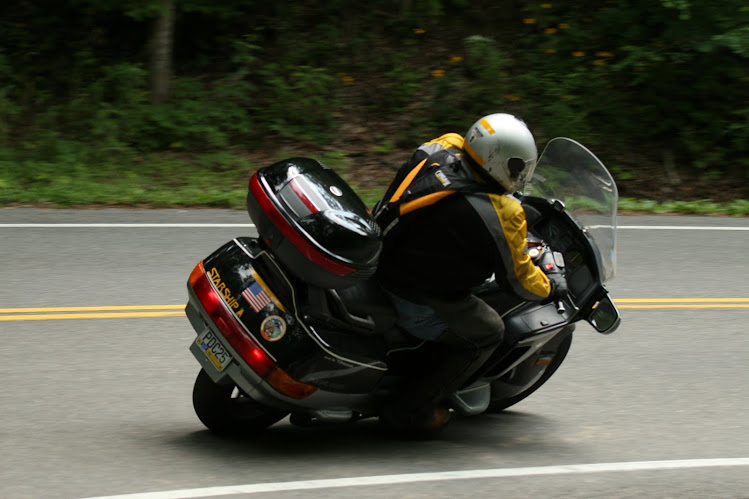The Object of My Dreams and Obsessions
Taken by Ralph Couey in Fort Valley, Virginia
Copyright © 2014 by Ralph Couey
Picture and written content
Ownership, or more accurately, the relationship with a motorcycle is unique in a person's experience. It is transportation stripped to its bare essences, and thus a journey is less one of physical necessity and more of a spiritual exaltation. As I have written ad nauseum, the hours and miles spent in this kind of communion are priceless for those who truly understand the essence of the ride.
But, like all things, this comes at a price.
Motorcycles are a different animal than cars. They require a great deal more attention to details such as tire pressures and oil change intervals than do cars. Mainly because when something breaks on a car, the owner is still inside a steel cage wrapped up in a cocoon of seat belt and airbags. When something breaks on a motorcycle, it can, and does, result in very mortal outcomes. Safety requires upkeep, which requires $$$.
My mechanical skills are limited, as are my collection of tools. Hence, when my bike needs something, I turn to my local factory-trained neighborhood wrench. This is especially true in that time of year when winter is finally driven back into it's dark, cold cave for another year. The sun warms the air, the snow disappears, the spring rains wash the road of sand and salt. And after months of painful dormancy, motorcycles hit the roads.
After sitting in the garage all winter (and especially if the bike sat outside), there are tasks that need to be done in order to make sure that the only thing the rider need worry about are the other drivers who have become blind to two-wheeled conveyances. The oil needs to be changed, the tires, brakes, cables, and wires need inspection. Every two years or so, the brake, clutch, and radiator fluids need to be swapped out. And then there are the occasional mechanical items that need attention. For me, this means a new front tire and a new clutch. The mechanical bill is going to be substantial, and the labor costs (at $90 per hour) effectively double that. But it's my very vulnerable butt on that seat, so I don't really mind spending the dough.
Riding saves me money over the long term. Over the last three years, the motorcycle has reduced my fuel costs by over $2,000 per year, which more than pays for the repairs and maintenance.
Thankfully, now that the federal government has an honest-to-Abe budget, (and not just another continuing resolution) agencies have begun to release overtime hours to deal with the accumulated backlog of work. Giving up some off-days (much less painful when it's 15 degrees and snowy outside) has enabled me to accumulate some extra money to shower upon the motorcycle. However, timing has been difficult. After a three-day tease of 70-degree days, winter rebounded with a 10-inch fall of snow. Now it will be necessary to wait for this slug of white stuff to melt, and a good rain or two to cleanse the street surfaces before I can safely navigate the streets. The good news is that meteorologists are broadly hinting that this is likely winter's last act of vengeance before the delights of spring settle in.
Spring is a rebirth. Earth awakens, turns green, and populates the hillsides with the brilliant colors of wildflowers. The very air changes from the edge of a knife, to a soft caress, restoring that love of life within us all.
And there's no place better from which to experience the joy of this new life than from the back of a motorcycle.


